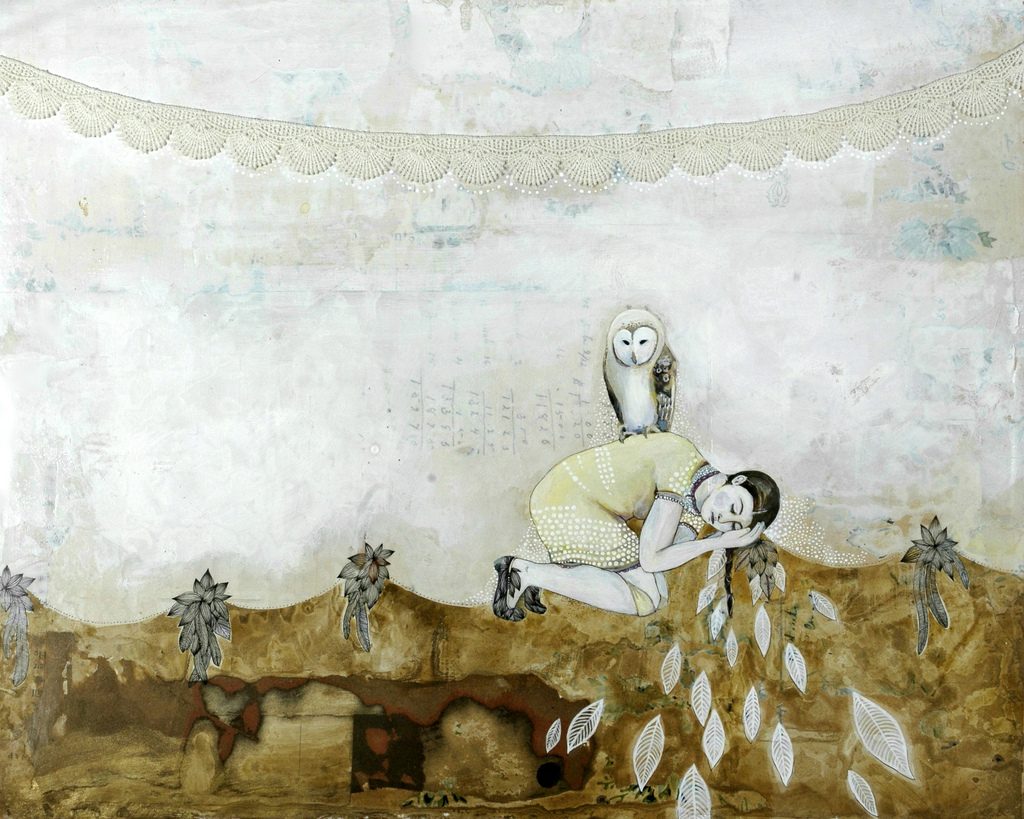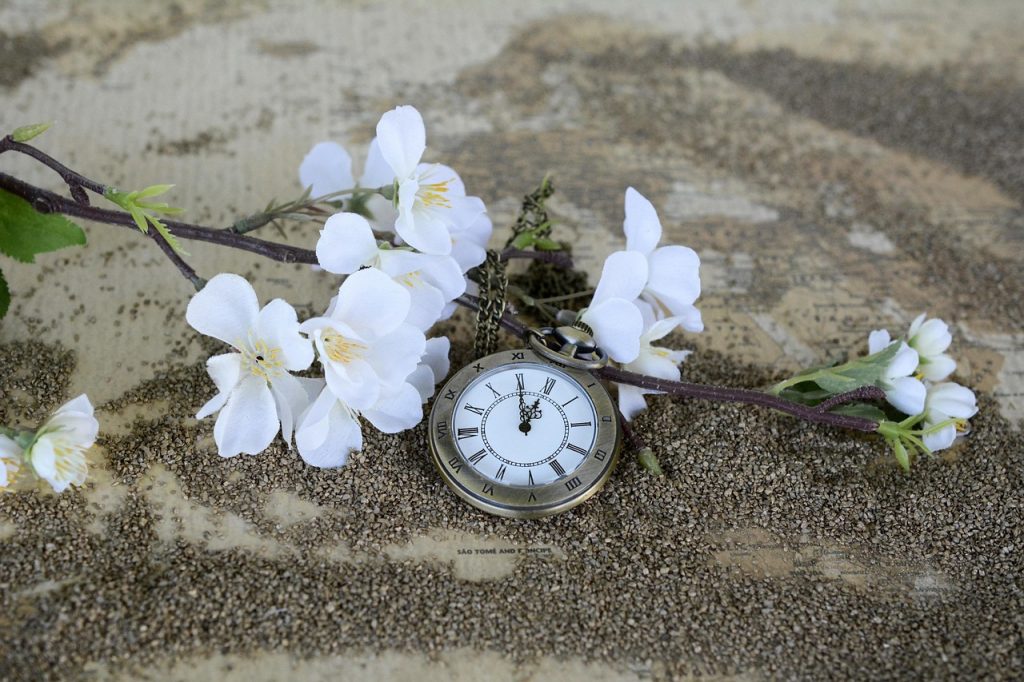Composting Grief | Co-healing with the Earth
Featured photo | by Joshua Hoehne
Grief reminds us that, in the divine alchemy of transformation, things sometimes appear to go backwards as they move forward.
The rewilding of humanity and our genetic transformation is contingent on the way we handle grief. Grief can be felt as a loss of species, ecosystems, and meaningful landscapes due to an environmental lesion. It constantly shifts and changes, varying from person to person at different stages of life. Grief is a separate political system, indifferent to Left or Right ideologies and solely focused on consciousness.
All levels of consciousness are affected by grief, whether it is emotional or mental, ancestral or generational, ecological or cellular. A grief-related thought can alter our sound, vibration, and even the functioning of our DNA. While grief cannot be contained or fixed, we can learn to walk alongside it with strength, calmness, and order.
Grief | Ally and Divine Force

Works of ancient Greek literature explore grief as a divine force. In Homer’s Iliad, one universal right is the memorial. In the Trojan War, silver coins were placed at burial sites of fallen soldiers as tokens to remember the lives that were sacrificed in service of a shared civic mission. At the end of the story, the physical tokens were replaced by mourning and shaped stories: a combination of totemism and ceremonialism. The narrative is repeated in Sophocles’ “Antigone” and Euripides’s “The Suppliants,” which encapsulate the perspective that grief is a divinely sanctioned right. As a metaphorical guide , memories of the past continue to accompany our way through life and lead us to the future. There is still a delicate balance in the way we treat our grief and memories of our ancestors and creation.
The key is in recognizing how profoundly our thoughts can shift our genetic state. We have an aptitude to evolve without waiting hundreds or thousands of years.
I believe the human body is capable of communicating through signals of sound, hormones, and photons to itself and its surroundings, including underground ecology—the Earth.
A Grief Ecosystem
Nature’s medicine lies in the ground. The soil is the dust, blood, flesh, and bones of our ancestors as much as it is a part of our own being and waking experiences. It is so present in molecules of air and food that we miss it entirely. The soil connects all of the pieces together, in a sense, the way grief does. It Grief is the intimate fabric of connection with the natural world. Humans belong to the land just like any animal, plant, mineral, water, and air particle, and each being experiences the emotional, spiritual, mental, and physical fertility of the ground.
The concept of “composting grief’’ resonates as a way of transforming energy into a renewed sense of purpose and growth. I think of this as transmutation or snake medicine: sound, meditation, selfless service, praying, nature, movement. I propose that we explore the concept of a symbiotic relationship between human grief and its impact on the underground microbial life—the microbiome—through a multidisciplinary approach that encompasses scientific, physiological, and ethereal aspects of meditation.

Similar to composting, I believe a human being is capable of cognitively and physiologically transferring ionic energy containing grief information into the Earth through conscious meditation and grounding techniques. What has been referred to as “grounding,” or simply placing your bare feet on the Earth’s surface, reduces cortisol levels, inflammation, and calms the nervous system through the absorption of the ground’s negative ions.
The soil contains various bacteria that absorb and masterfully manipulate electrons and ions in their environment. In meditation, we intentionally release feelings of hurt, worry, and fear, guiding our thoughts to calmness. Breathwork further enhances this process by encouraging awareness and presence within each cell, helping to alleviate anxiety and welcoming openness to new possibilities. Using the same vibration-driven principles present in grounding, meditation, and breathwork, a person reconnects with their inner self and facilitates an energetic exchange of grief with the soil, fostering personal healing and evolution.
The soil is a network of life-giving microorganisms, akin to the mitochondrial membrane potential in our cells, that support the vital bioenergetics of the underground mystery. Actinomycetes, fungi, bacteria, nematodes, earthworms, whiteworms, millipedes, flies, land snails, and beetle mites are first-level consumers of compost.2 This layer supports the rest of the underground microbiome—protozoa, rotifera, soil flatworms, predatory mites, ants, rove beetles, feather-winged beetles, ground beetles, mold mites, springtails, pseudoscorpions, centipedes, and other undiscovered species.3 All of these organisms support the existence of higher tropic life forms. They date back nearly four billion years and will probably survive any future extinction event.
This diverse soil microbiome mirrors our body’s repair system. Whenever a cell exhibits harmful effects on its genetic material, such as mitochondrial oxidative stress, DNA fragmentation, alteration of gene expression, or genetic mutations, T cells are recruited to mount an immune response. T cells work together with glial and neuron cells to regulate the damaged cells’ microenvironment: glial cells are insulation and nutrition; neurons carry messages and meanings. Grief is cached inherently within the memory of T cells and turned into a passage of intergenerational information. T cells can be likened to soil microbes that repair soil health through nitrogen fixation and suppression of pathogens.
As we’ve seen, bacteria are an important component of the soil microbiome. Bacteria aren’t solitary organisms. They exist on everything and are deeply embedded in the human DNA construct. They use a cohabiting language of electrical signaling to other bacterial forms for their survival. This mode of communication between humans and bacteria isn’t fundamentally different from the language between humans and water, or humans to humans. It is as real as channeling, meditating, or talking with a loved one.
A book, Grounded: A Fierce, Feminine Guide to Connecting with the Soil and Healing from the Ground Up, by Erin McMorrow was sent to me as a surprise gift by my friend, Maggie Kennedy, who said she felt would resonate with me. Not only did it resonate with me, but it turned out that this book on sacred interconnectedness activated my own path of regenerative healing through writing. So, I became a writing student under Dr. McMorrow’s guidance.
“Composting is a form of giving back to Mother Nature and the cycles of nourishment,” Dr. McMorrow says, “and it’s also a reminder that the things we think we can’t use can actually be returned to the earth with care and used for something else (the material version of releasing any energy from our bodies that doesn’t serve us).”1 Human and soil microbiome share an inherent quality: both are in a constant state of repurposing energy to regenerate life: “grounding” and “earthing.” Studies have yet to explore the proliferating impact the human body has directly on the soil through meditation because it’s immeasurable. One can only trust, believe, and commit to doing it to experience the results. By prayer, mantra, or meditation, human beings can create a meaningful relationship with soil.”
In 2020, one of the first studies examining the impact of meditation on gut bacteria, which are crucial to overall health, compared bacterial responses between study participants who meditated and those who did not. The results showed three types of bacteria—Bifidobacterium, Roseburia, and Subdoligranulum—responded to the brain’s influence and led to a series of changes in the intestinal flora that improved the body’s holistic regulation. These changes included enhanced cellular motility and stronger immunity.
Meditation activates the gut-brain axis (GBA), an increasingly discussed topic in the last decade. The GBA is a bidirectional communication network between the central nervous system, autonomic nervous system, and the hypothalamic-pituitary axis (HPA). The gut-brain axis integrates gut function with emotional and cognitive centers in the brain. A 2021 study on meditation and gut microbiota proposed that meditation can reinforce healthy gut-brain axis* crosstalk through the central nervous system (CNS) and ANS pathways.4
While conventional science emphasizes the role of the gut microbiome influencing our emotional well-being, my inquiry on the axis between meditation, emotions, and soil ecology is yet to be systematically explored: The study on the effect of meditation on intestinal flora hints at a possible connection between emotional well-being, as fostered through practices like meditation, and the broader ecological systems that surround us.

The suggested link between meditation and the underground microbiome—composting grief—draws upon the relationships among cyclic meditation, the microbiome, the gut-brain-axis, esoteric teachings, and various healing practices.
A 2022 study by Maeder and colleagues used acoustic “soundscapes” to predict temporal and spatial dynamics† of organisms in the soil.6 Although soundscapes are more commonly researched above the ground, the results of the study suggest that the acoustic diversity can be calculated from different soil communities. The evident differences between soil soundscapes can provide insights into the soil’s composition (such as taxa richness) and help evaluate the relationships between living soil microorganisms with greater precision. In a similar manner, we could apply eco-acoustic technology and statistical methods to observe the impact of grief meditation and sound as a noninvasive approach to monitoring “soil ecology” in the composting grief process. Grief reminds us that, in the divine alchemy of transformation, things sometimes appear to go backward as they move forward. Through our shared experiences of grief, both we as individuals and the planet can evolve together.
In the next section, we will explore a meditation technique that combines the elements of soil and sound to facilitate the transmutation of grief. Feel free to immerse yourself in this process and trust your instincts, as healing is an organic and unique journey for each individual.
Composting Grief Meditation
Start by putting both feet on the ground, or visualizing the feet in the soil. You could close your eyes and see roots from your tailbone lowering into the ground, physically connecting with the land. Think of gratitude for the soil and its underworld microorganisms.
Thank you, Mother Earth, for sustaining our bodies and spirit with the sacred spirits of water that I return back to the land, rivers, and streams with gratitude.
Call on your divine guides, ancestors, and angels.
Reflect on the grief that you would like to compost: fear, loss, shame, jealousy, anger/rage, anxiety, depression, hopelessness, confusion, discomfort, chaos, hate, and discord—stressors that can be associated with grief and trauma. Form them into a shape. Take an inhale, and with the exhale, move the shape in a downstream pattern through your perineum, legs, and feet into the ground, like tree roots. Repeat with each inhale.
This motion creates a downward spiral, shifting laterally to cycle upward. The “down” cycle represents the grief that will be energetically decomposed by the underground microbiome to give life; the “up” cycle is the oxygenated life that is created by the microorganisms and absorption of the ionic charge from the ground. This circular scheme is stimulating a cellular connection between the human body and the underground microbiome. Its biochemical symbiosis will enrich the acidity, moisture, and oxygen to allow decomposition slowly over time with safe byproduct levels of carbon dioxide. It is earthing for you, composting grief for the fertility of the soil and the garden of your life.
You can stay in this meditation for as long as you feel comfortable. Gratitude is the portal through which your emotions continually filter through as they penetrate the ground through the biochemical channel of your chakras. When you are ready to end the meditation, take a moment to express appreciation to the land and your guides.
Placing your hand on the ground is a way of relaying the ground’s sensitivity to the brain. The ground will share information to you in multiple ways, whether through its vegetation, animal attraction, or the vibration that the ground connects with you on a cognitive level. Consistency enhances your body’s connection with the ground, fostering a sense of restoration and prolificacy. Remember, this practice aims to support your healing journey, as grief is not something to be fixed but a process to be navigated with compassion and understanding.
As our understanding of the interconnectedness of life and its adaptability continues to grow, we can explore intuitive nutrition, elemental sounds, and effective fertilizing techniques to nurture a symbiotic relationship with grief. This knowledge helps us to shift our perspective on grief’s role in our lives. As we learn more about bacterial intelligence and its impact on consciousness, evolution, and cognition, we open gateways to new approaches of connecting with our bodies, caring for the land, and pursuing a path of mindful individuation.
†Spatial dynamics is the study of the relationship between an entity and its surrounding environment, and as a result, temporal dynamics is the observation of the inherent complex changes to the entity’s behavior over time.
References
- McMorrow, Erin. Grounded: A Fierce, Feminine Guide to Connecting with the Soil and Healing from the Ground Up. Louisville, Colorado: Sounds True, 2021.
- “All the Compost Creatures: Levels 1, 2 and 3.” Planet Natural Research Center. December 8, 2022.
- “All the Compost Creatures: Levels 1, 2 and 3.” Planet Natural Research Center. December 8, 2022.
- Ningthoujam D. S., N. Singh, and S. Mukherjee. “Possible Roles of Cyclic Meditation in Regulation of the Gut-Brain Axis.” Frontiers in Psychology 12 (2021): 768031.
- Alonso et al., “Maladaptive Intestinal,” 163–72; Alvery et al., “Gut- Derived,” 480–89; Cogan et al., “Norepinephrine,” 1060–65; Freestone et al., “Involvement of Enterobactin,” 39–43.
- Maeder M., X. Guo, F. Neff, Mathis D. Schneider, and M. M. Gossner. “Temporal and Spatial Dynamics in Soil Acoustics and Their Relation to Soil Animal Diversity.” Plos One 17 (2022): e0263618.






